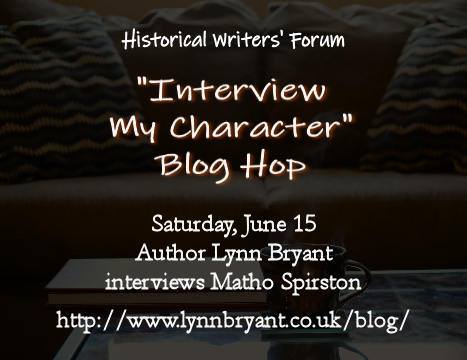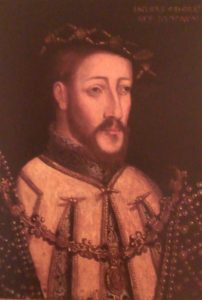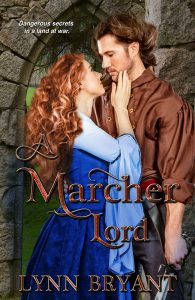 Today at Blogging with Labradors I’m delighted to be interviewing Captain Matho Spirston. I first met Matho in Abduction of the Scots Queen by author Jen Black, which follows the young Matho on his adventures on the Anglo-Scottish borders in the sixteenth century. Matho has come a long way since his first appearance in Fair Border Bride and is beginning to make a name for himself in the service of the Scottish Queen Dowager.
Today at Blogging with Labradors I’m delighted to be interviewing Captain Matho Spirston. I first met Matho in Abduction of the Scots Queen by author Jen Black, which follows the young Matho on his adventures on the Anglo-Scottish borders in the sixteenth century. Matho has come a long way since his first appearance in Fair Border Bride and is beginning to make a name for himself in the service of the Scottish Queen Dowager.
Jen Black gives the following introduction to her character:
Abduction of the Scots Queen is rather a giveaway to the time and the place, not to mention the storyline! However, the story really begins with what I call the prequel ~ FAIR BORDER BRIDE ~ in 1543. The setting is a hamlet called Aydon not far from the northern bank of the river Tyne about twenty miles west of Newcastle. The Carnaby family are the local landowners and their daughter, Alina, has grown up liking Matho Spirston, the guard captain who keeps the family safe from raids by those rascally Scots.
Matho has rather a soft spot for Alina. When she falls for well-to-do Harry Wharton, and her father throws Harry into the dungeon, she begs Matho to help Harry escape. The friendship begins there and prospers when Harry’s father invites them both to ride into Scotland and bring the infant queen south in order that she should marry King Henry’s son. With heads full of promises of gold, the two young men set out north.
Each book is complete and sees Matho learn how to conduct himself as he climbs the social ladder and deal with lords and ladies of the time.
Without further ado I would like to welcome Matho Spirston to Blogging With Labradors.
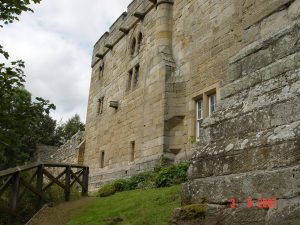 Matho, thank you for agreeing to be interviewed, I know you’re busy these days, you’re a man on the rise. But it wasn’t always so, was it? Will you tell me a bit about the early days? Who were your parents and where were you raised?
Matho, thank you for agreeing to be interviewed, I know you’re busy these days, you’re a man on the rise. But it wasn’t always so, was it? Will you tell me a bit about the early days? Who were your parents and where were you raised?
The early days? Thinking about them make me smile. My da was head cowman for the Carnabys, the local gentry who lived in the big house at Aydon. The Scots raided so many times we fortified the farmstead with big high walls and parapets and called it a castle. I grew up with the gang of youngsters who fought and played around the castle farms, cots and cabins in the Aydon Township. Lionel Carnaby was in our gang, until we all grew up and had to take on responsibility. I was fourteen when da took me to work for the family. I got to be guard captain by the time I was twenty, but I never earned more than enough to feed myself.
Some of your early success came through your friendship with Lord Wharton’s son, Harry. It seems an unlikely friendship on the surface. How did it come about?
Well, I suppose it would be because of Alina Carnaby. Pretty girl, the same age as me. We were friends. Well, maybe I fancied for her a bit, but I wasn’t breaking my heart over her when she fell for Harry. There was a nasty tangle because he used an alias, a family name that her father hated. He threw Harry into the dungeon and was going to execute him, so I helped him escape. Saved his life. Then the reivers galloped off with Alina on her wedding day, and without me, Harry had no idea how to find her. The friendship just grew. We complimented each other. I can see that now. He had all the book learning I didn’t have, but I had been ordering rough men about since I was fifteen, and he was a little naïve in that respect. I mimicked his accent, which is why I talk so well now, kept his wild ideas in check and taught him all I know of the dirty tricks of hand-to-hand fighting.
You were on a mission with Harry Wharton when you first encountered the Earl of Angus’ daughter, Margaret, I understand. I’m told this is a sore point with you, and she’s a controversial woman, I know. What do you think of her and are you still friends?
Ah, you mean the beautiful, calculating, scheming, delightful Meg Douglas. Oh, I was a fool. Because she was a noble lady, I was flattered that she took an interest in me. It went to my head, according to Harry. He knew of her in London, and he warned me, but I thought I knew best. She was young, attractive and I thought she was rich. Compared to me, she was. The money Harry’s father gave me was the first real money I’d ever had. She nearly got me killed, and I wouldn’t call her friend now, not since I scarred her handsome new husband’s face…but with hindsight, she also got me noticed by the Dowager Queen and that has been good for me.
And now you’re working for the Dowager Queen. Another formidable woman. You’ve known her for a while now, I suppose. Can you tell me how you first came to be working for her?
I’m laughing because she threatened to have me executed at dawn and if I hadn’t escaped from Stirling’s dungeon, I would be dead. She thought I’d stolen her child, the little queen. In fact, I had stolen her but Meg tried to save her own skin by returning the child to its mother. I got away and came back to England. The next time I met Marie de Guise, I didn’t think she’d remember me, but she did and drove a hard bargain, which I honoured. After that, I think she trusted me.
What is she like, Mary of Guise? Do you like her?
She is a brave woman surrounded by a pack of greedy nobles who will serve anyone who pays them. I admire and respect her, for she has a good head on her and manages to outmanoeuvre most of them. I was wary of her for a long time, still am to a point, but if you ask me again in five years’ time, I will probably say I like her.
This may be a difficult question to answer, Matho, but I have to ask. You suffered a loss, back in Edinburgh. Can you tell me about her? What happened?
Briefly, because I don’t wish to dwell on this, Phoebe and I were in Edinburgh when the English invaded. We were going to marry, found ourselves in the wrong place at the wrong time and the English cut her throat. Going to France was a Godsend. It got me away from everything that reminded me of her.
Your first mission for the Dowager Queen took you through France, delivering letters to her family and was a great success, I’m told. What was the most important thing to happen to you on that journey?
I learned a lot about people and dealing with strangers, especially important ones. I learned a language on the hoof, you might say. I made good friends in Jehan and Agnes and the lady who reintroduced me to the pleasures of a shared bed. I suppose the most useful thing was le duc de Guise told the Dowager Queen he approved of me.
There’s a rumour that you recently married, Matho, although it doesn’t seem to be generally known. Can you tell me the truth about that? Who is she?
Agnes de Guise is a distant relative of the Dowager Queen. She’s illegitimate, the daughter of a de Guise brother in the church, but her mother was of lower class, and he did not marry her. The Dowager seems to have taken to Agnes, and she now has a place at the Scottish court. Since we both have an enemy in the Cardinal of St Andrews, we have decided to leave the court and I am taking her to my old home on the banks of the Tyne. Yes, I am returning to Aydon. No doubt there will be changes there, but at least I can say hello to Harry and Alina again.
You’re an Englishman and you work for the Scottish Crown. Some people would call you a traitor for that. How do you see it? Do you ever imagine a time when you’ll find yourself with divided loyalties, with England and Scotland at war?
So far, nothing I have done has damaged England. The Dowager likes me because I am not Scots and have no loyalties to anyone in Scotland. No claims of clan, or family. No Scotsman can say that. She also likes me because I am honest and tell her the truth. I hope the situation you describe will not happen, but if it does, I shall deal with it. In a way, the border folk are used to being at war with each other. You might say it has been an ongoing situation for the last two hundred years.
What happened to your friendship with Harry Wharton? Does he know where you are and what you’re doing? Do you think it would cause a breach between you?
I shall be seeing Harry soon. He probably thinks I’m dead in a ditch somewhere! He won’t think me a traitor for he was always open minded, but he might ask a lot of questions about Scottish policy on the borders. If he does, he’ll find I don’t know a great deal on that topic.
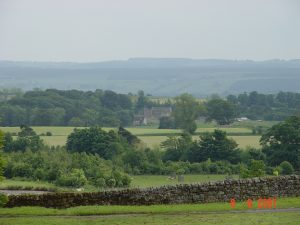 You’ve come a long way from a lowly captain of the guard, Matho. What’s next for you? Where do you see yourself being over the next few years?
You’ve come a long way from a lowly captain of the guard, Matho. What’s next for you? Where do you see yourself being over the next few years?
I hope my house is not taken over by roaming bands of homeless men. It has been empty a while now. I spent a lot of time building two new rooms onto the cottage for Phoebe, but she never saw it. I imagine my new French wife and Alina will become friends. What will Agnes make of life in Aydon? It’s a very different life to the one she led with the Duc de Guise’s family, and it is nothing like the Scottish court. Jehan may join us from time to time. If things settle down with the Cardinal in Stirling, I may go back, or I may work for Harry’s father again. The Dowager may need me again. Something will turn up.
I’m sure it will for a young man as resourceful as yourself. Matho, thank you so much for joining us today. Good luck with your return to Aydon. Personally, I’ve thoroughly enjoyed reading about your adventures, and I sincerely hope to see more of them from Jen Black in the future.
That’s all from Matho Spirston for today and it’s been a pleasure talking to him. For more details of his adventures, I strongly recommend you try the books yourself, available at these links.
Fair Border Bride (The Prequel)
The Abduction of the Scottish Queen (Book 1)
More information about Jen Black and her books can be found at the following links:
Friends of Jen Black Facebook Group
Giveaway
All Jen’s books are available on Amazon. Abduction of the Scottish Queen, the first in the Scottish Queen Trilogy is £1.52 on Kindle and £8.99 in paperback. To celebrate Matho’s appearance in the Blog Hop, Jen has MOBI copies of this book to give away. To win one, please add a comment to the blog and she will DM you for your e-mail address.
About the Author
 Jen lives in the lovely Tyne valley between Hexham and Newcastle in north east England, a stone’s throw from the Roman Wall and with a castle that dates from the 1100’s around the corner. Writing and photography are her main interests and rambling the Northumbrian countryside with her Dalmatian Tim twice a day keeps her fit. She has a degree in English Language & Literature and managed academic libraries for a living; now retired, she disappears to France for a long holiday in the summer. (Adventures in France are recorded on her blog!) Her father’s family have been traced back to the 1700’s on the Welsh and English border—a place she has never been, but her maternal grandfather worked in Skye, and a more remote ancestor came from the Aberdeen area, so if ever there’s time, perhaps there’s more to learn on that score.
Jen lives in the lovely Tyne valley between Hexham and Newcastle in north east England, a stone’s throw from the Roman Wall and with a castle that dates from the 1100’s around the corner. Writing and photography are her main interests and rambling the Northumbrian countryside with her Dalmatian Tim twice a day keeps her fit. She has a degree in English Language & Literature and managed academic libraries for a living; now retired, she disappears to France for a long holiday in the summer. (Adventures in France are recorded on her blog!) Her father’s family have been traced back to the 1700’s on the Welsh and English border—a place she has never been, but her maternal grandfather worked in Skye, and a more remote ancestor came from the Aberdeen area, so if ever there’s time, perhaps there’s more to learn on that score.
For more intriguing interviews with favourite characters from a selection of historical novelists along with book news and giveaways, keep an eye on the ongoing Historical Writers Forum “Interview my Character Blog Hop” (June 5 – July 20 2019).
In particular, remember to visit Nancy Jardine’s blog on 26th June where she will be interviewing Colonel Paul van Daan of the 110th Light Infantry about his career since we first met him in An Unconventional Officer.

